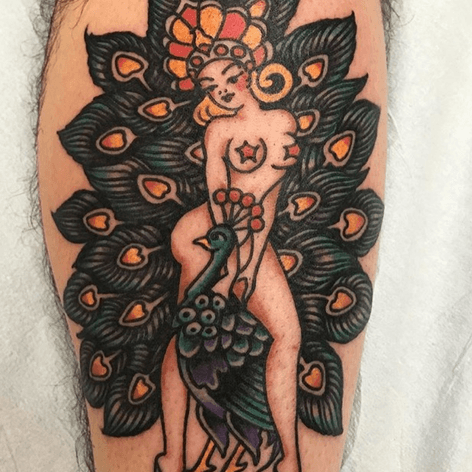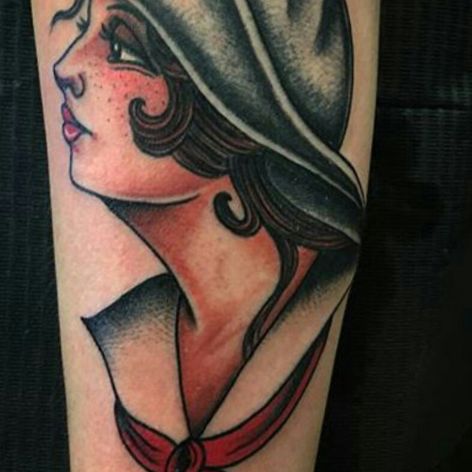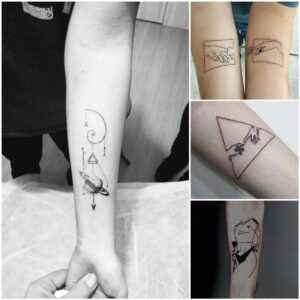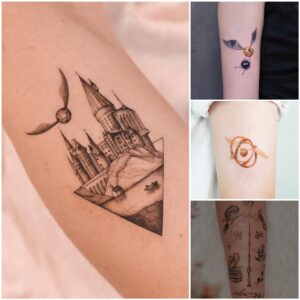What is a Pin-up Girl?

Pin-up girls are voluptuous and glamorous women of the 1950’s era usually depicted doing household chores or luxuriating in sexy poses. Since the aesthetic developed during the more modest time frame of the ’50s, the pin-ups are rarely ever nude but possess a strongly implied sexuality both in their expressions and style of clothing.
The term “pin-up” originated to describe these buxom and beautiful women because many people would pin photos of them onto their walls. The trend first began in the mid-1800s when Burlesque dancers began to make photographed cards of themselves to promote their services. While these calling cards were considered incredibly risqué and provocative for the time, they allowed women to challenge the idea that female sexuality was immoral or dangerous, and thus began the early movement for women’s sexual liberation.
The earliest known examples of commercial pin-ups stem from Paris where they were made popular in the 1890s by an artist named Jules Cheret. Cheret began to use curvy and voluptuous women to sell various products and this trend eventually gained momentum in the U.S. about a decade later. By the early 1900s major designers like Christian Dior were using pin-up girls in advertising and campaigns across the country.
During the first and second World Wars, many soldiers used these pin-up girl photos to remind them of home, bring them luck, and motivate them to fight for their country. Around the 1930s, pin-up girl imagery began to take a more military-focused approach, showing the women in army uniforms instead of lingerie, and even plastering pin-up imagery like the “Varga Girl” onto fighter planes.
Many illustrators and artists were inspired by the sex-appeal and charm of the pin-up girl, like the iconic greats Gil Elvgren and Alberto Vargas. Their timeless drawings and works of art have continued to remain popular in modern times, often inspiring classy pin-up girl tattoos, prints, and various recreations.
After the end of WWII, pin-up girls lead to the launch of the famous Playboy magazine, which featured Marilyn Monroe as their original centerfold. This iconic photoshoot birthed a massive platform for pin-up girls, helping to launch the careers of famous beauties like Bettie Page, Jayne Mansfield, Rita Hayworth, and many others. From this point onward, pin-up girls became a solidified part of Americana, remaining relevant even in modern times.
Where Do Pin Up Tattoos Come From?

Pin-up tattoos were first popularized in the 1930s by historic Traditional style artists like Sailor Jerry. To remind them of home and bring them luck, many soldiers and sailors chose to get pin-up style tattoos, creating a popular trend nationwide. The original Sailor Jerry pin-up girl was depicted with bold lines, patriotic accents, and sexy curve-hugging outfits. This bright and bold vintage style pin-up tattoo is still popular today among body art enthusiasts, serving as a testament to the staying power of classic Traditional motifs.
In modern times, the pin-up tattoo has transformed to incorporate elements of contemporary culture, creating everything from Disney pin-up tattoos to cowgirl pin-up tattoos and everything in-between. Though typically rendered in an Old School style, pin-up girls work in a wide variety of styles from Color Realism to New School.
What Do Pin Up Tattoos Mean?

While a pin-up girl tattoo can be personalized to embody a range of different meanings, the traditional themes surrounding pin ups often speak to ideals of feminine beauty, female empowerment, and patriotism. To make your intended meaning clear, you can play with additional elements like Americana themed motifs, feminist quotes, or relevant symbols.
If you’re interested in a patriotic pin-up style tattoo, a Traditional style piece may be your best route, as this style was known for commonly incorporating classic American imagery and was also the style to popularize the old school pin-up girl tattoo. If Traditional style tattoos aren’t your thing, don’t worry, as this motif works in a variety of styles.
For those interested in a pin-up tattoo expressing feminine beauty and sex appeal, you can showcase your design any way that you’d like. From Black and Grey Realism bombshell pin-up girls to Neo-Traditional burlesque designs, these stunning and sexy pieces work in a variety of ways.
If pin up tattoos make you think of feminism, strength, and empowerment, you could try exploring classic motifs like Rosie the Riveter, or rockabilly style pin-ups with attitude. Of course, the design itself doesn’t have to be fierce to represent a feminist theme, any depiction of the classic pin-up beauties is an ode to feminism, as these women worked to help liberate female sexuality, and displayed defiance towards the expectations of modesty placed on women during the 1950s.
Who Invented Pin Up Tattoos?

While there is no one accredited with having “invented” pin-up tattoos, there are many early Traditional tattoo artists who helped to popularize these classic and stunning motifs. One of the most well-known examples would be Old School artist, Sailor Jerry, whose pin-up tattoo flash is still used today to create stunning pieces of permanent art.
Outside of tattooing, illustrators like Jules Cheret, Gil Elvgren, and Alberto Vargas are credited with helping to start the pin up trend and expanding it throughout the world. These iconic drawings and paintings became the inspiration for real-life pin-up girls and helped to eventually fuel publications like Playboy while being used in mainstream advertisements and political campaigns across the United States.
Why Do Guys Get Pin Up Tattoos?
Pin-up girl tattoos have remained popular among men for well over a century, thanks to their enduring allure and classic Americana appeal. Many men choose to get pin up tattoos today to celebrate patriotic themes, express a love for the feminine form, or pay homage to Traditional tattooing’s early roots. In the 19th century, during tattooing’s introduction to the western world, it was predominantly men deciding to tattoo pin-up girls as permanent art, but as time has progressed both genders have expressed a love for these classic and stunning tattoos.
The pin-up girl tattoos we see on women often work to depict a feminist mindset or serve to showcase feminine beauty, using classic pin-up flash and designs to create empowering and rebellious feeling pieces. While these tattoos often feature stunning female models, both women and men have decided to embrace male-focused pin-ups as well. Often crafted in a Neo-Traditional or Traditional style, male pin-up tattoos are usually infused with humor, sexuality, and just the right amount of kink, making them a fun choice for anyone inspired by this classic motif.
Top Pin-up Girl Tattoo Artists & Shops
US







